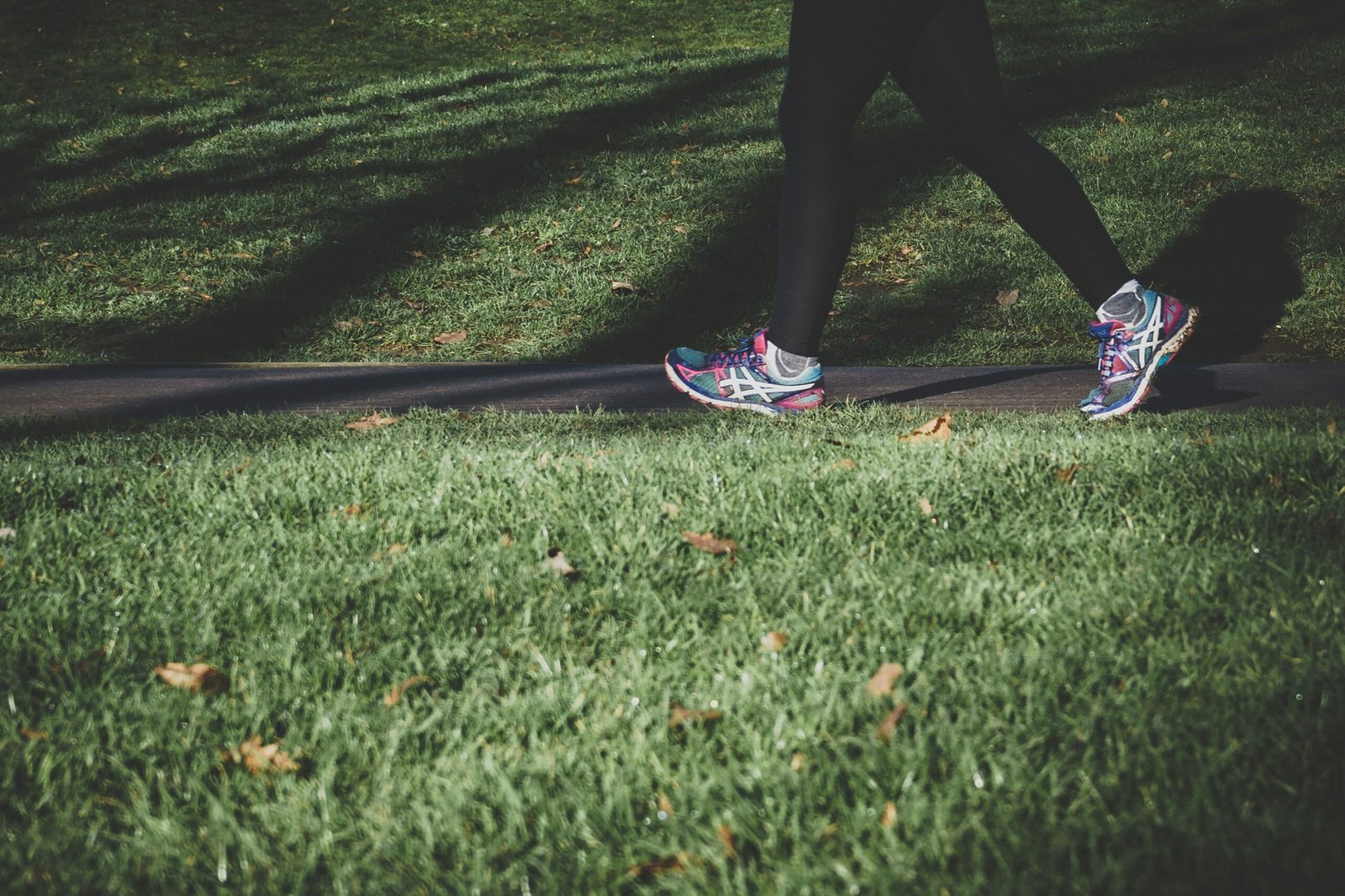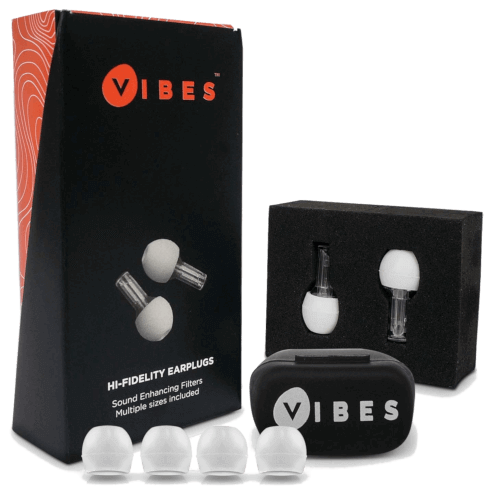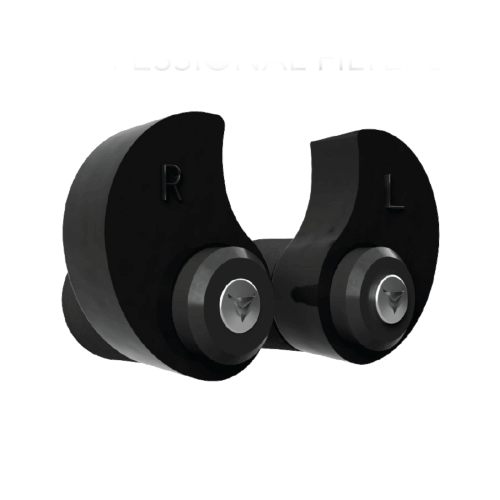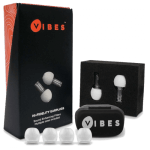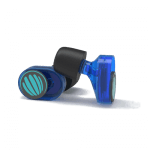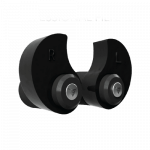This is a review that covers ear plugs that allow more of certain frequencies into your ears in order to give you a more natural-sounding listening experience. They’re good for other activities like motorcycle riding and sporting events too, but if you’re wearing ear plugs for protection against extremely loud sounds, or to block out background noise when you’re trying to sleep, check out our best ear plugs review and our roundup of the best ear plugs for sleeping instead.
Table of contents
- How we selected finalists to test
- Compare the best concert ear plugs
- Important features to consider
- How does the NRR rating work?
- How much protection do you need?
- How we tested
- Best overall: Vibes – Hi-Fidelity Earplugs
- Best hearing protection: Eargasm – Slide
- Best earplugs for musicians: Decibullz – Professional
- Other finalists we tested
- The bottom line
How we selected finalists to test
As with all our reviews, we looked extensively at buyer testimonials and compared the top sellers to make up our short list of finalists to test. We picked one representative from each type of ear plug based on price, sales history and availability, rather than trying to find all the differences between products that appear identical.
Previous experience
We started this review with a long history of wearing earplugs and listening to music at live events. Daniel, our lead researcher and tester, has been mixing live bands for more than 15 years. Our other tester plays acoustic guitar or drums at weekend gigs.
Our testers have also used foam earplugs for situations that require them (including work with power tools and riding motorcycles), and both said they wouldn’t hesitate to wear foam ear plugs at an especially loud concert. Our musician tester regularly uses Earaser-brand filtered earplugs when he’s not wired up with in-ear monitors. (We tested the Earasers as well, but they offer so little reduction we didn’t include them in our results.)
Reddit, reviews and other recommendations
We read dozens of reviews of earplugs, and found that for the most part, they were recommended based on popularity or anecdotal experience with one brand. Wirecutter has the only review with detailed comparative information — other reviews, including a blog post from the Hearing Health Foundation, Producer Hive and Metal Insider describe real testing, but they and the hundreds of testimonials on Reddit’s r/ave and other sites for concert attendees are fairly vague about the details. Inner FIdelity published a review that includes measurements in 2015, but many new models have come out since then.
We purchased ear plugs with the best hearing-protection level for most concerts — between 10 and 20 decibels of noise reduction. We also looked for models that came with at least one size option so people with bigger or smaller ears aren’t left out.
Compare the best concert ear plugs

| Ear Plug | Price Scale | Tester Score | NRR | Tip Options | Insertion Depth (mm) |
|---|---|---|---|---|---|
| 1. Vibes – High Fidelity Concert Earplugs | $ | 3.75 | 15 | 3 | 14* |
| 2. Eargasm – Slide (open/closed) | $$ | 3.75 / 2.5 | 15 / 22 | 3 | 11–19 |
| 3. Decibullz – Professional | $$$$$ | 5 | 14 | 5 | 11–20 |
| 4. Loop – Earplugs | $$ | 3.5 | 12 | 6 | 10–12 |
| 5. EAROS – ONE | $$ | 3.75 | 17 | 2 | 21 |
| 6. EarPeace HD | $ | 3.5 | 17 | 2 available | 14* |
| 7. Etymotic ER20XS | $ | 3.25 | 14 | 3 | 14–20 |
| 8. V-Moda Faders | $ | 2.75 | 12 | 4 | 13 |
| *You can go much farther, just make sure you don’t lose these in your ear canal | |||||
Important features to consider
Tip size selection: If you can’t seal your ear canals with your new pair of earplugs, you won’t get the full reduction you’re expecting. More importantly, if the earplugs aren’t comfortable, you’ll hate wearing them. All of the reusable plugs we tested have at least one alternative size option, and most give you three or more sizes to try right out of the box.
Tip shape and insertion depth: Everyone’s ear canal is different, so try a different shape if you don’t like the way your first set feels. Triple-flange tips need to go deep and bend through the inner curve of your ear canal to make a good seal, while round tips use pressure to fill up the space outside the first bend to stay in place.
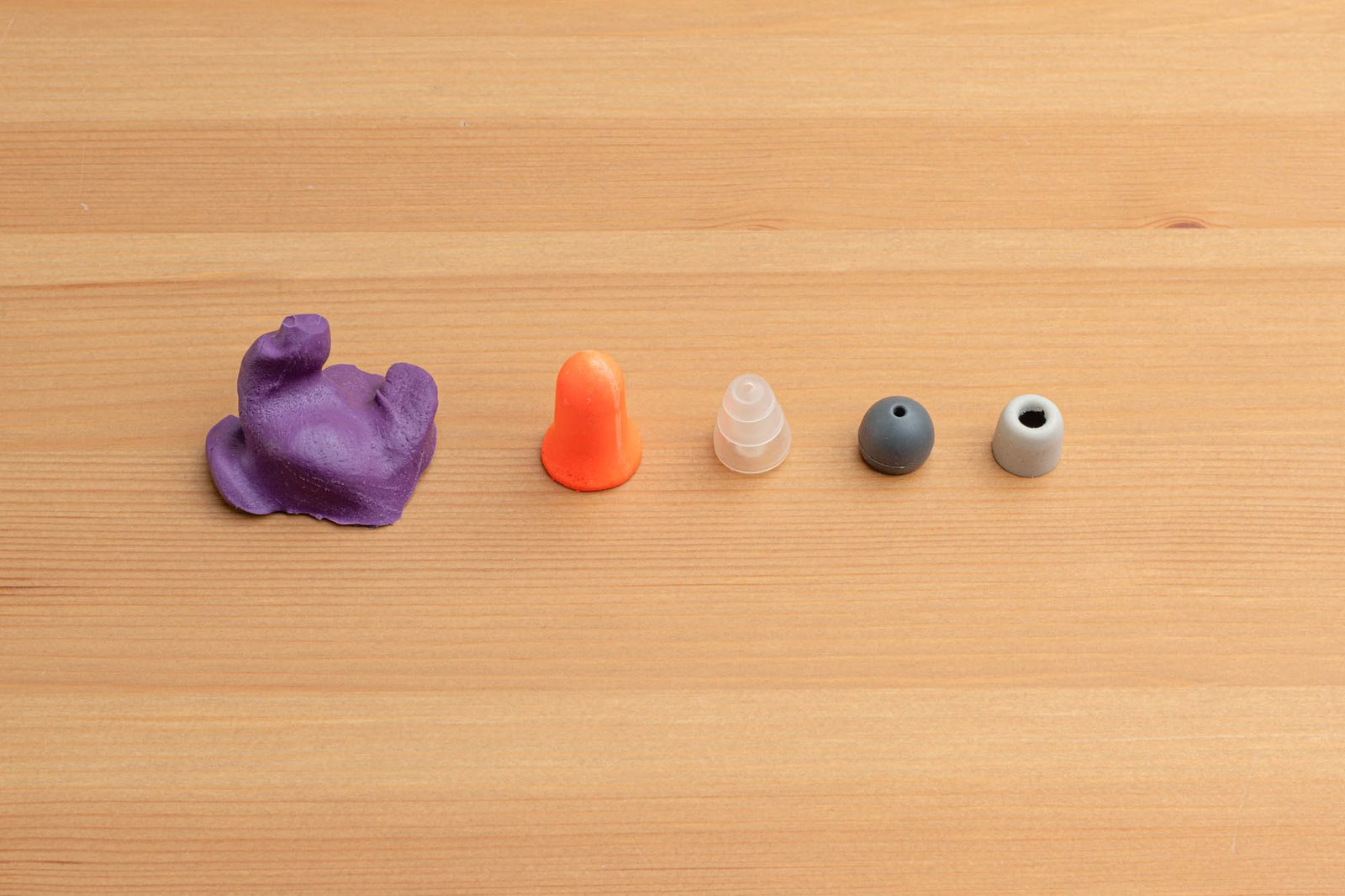
Availability of other tips: If you’re not happy with the fit of tips supplied by the manufacturer, you can also buy foam or silicone tips made to fit in-ear monitor headphones. Comply sells reliable expanding-foam replacement tips for nearly every nozzle size and ear size, but Spinfit silicone tips are also worth trying out, and Westone sells a complete ten-option “fit kit” that will work with the narrow-nozzle ear plugs.
Noise Reduction Rating: See our discussion of the NRR below. This number averages out differences in fit and hearing sensitivity to give a reliable indicator of how earplugs should perform.
Filter options: In a few cases, you can buy these ear plugs with different filters for different levels of protection. We tested designs that rate between 12 and 22 in their NRR scale, and that’s typically on the more-protective end of the spectrum for the best high fidelity ear plugs.
How does the NRR rating work?
Because we all have different ear shapes, ear-plug manufacturers have to test their products in a laboratory with a group of at least 20 volunteers. The Noise Reduction Rating (“NRR”) is calculated after testing how well a pair of earplugs block a standard set of tones for all the test subjects, and the number averages out differences in fit and sensitivity between most people. (Standard deviation numbers are often listed so you can see that variability.)
This system is designed for people who use earplugs in loud work environments, where even boring tools like air compressors and leaf blowers can cause hearing loss because of constant noise every day. Exposure to noise at concerts is a bit different, and it’s important to understand how.
Decibels and weighting scales
Humans hear some sound frequencies better than others — for example, you rely heavily on higher-pitch details to know the difference between a P and a B when someone’s talking to you. That’s also part of what makes some sounds more annoying: Screaming children and squeaky bearings are overloading your ears with frequencies that are as painful as possible.
Decibels are measured with “perceptual weighting” applied, so that we’ll be able to more effectively compare how loud two different sounds seem to a human listener.
The A-weighted scale is the most common, and basically the only scale that’s been used for testing hearing loss. Unfortunately for musicians, an A-weighted sound pressure meter doesn’t pay much attention to low-frequency sound. It’s ideal for measuring the loudness of quiet sounds and works well for comparing the annoyance caused by a lawn mower, a neighbor’s dog or a grinding tool. But this system is terrible for judging subwoofer competitions at a car show or “percussive” sounds like gunfire.
The C-weighted scale, in comparison, includes most of the bass we can hear in its measurements, and it’s closer to how we perceive loud sounds. The scale is still filtering out a little bit of extra-low-frequency sound, but in a way that’s still effective for measuring music and movie soundtracks where people are paying attention to gut-rumbling bass.
Calculating ear plug effectiveness
If you have a measurement of the sound you’re worried about on a C-weighted scale, finding out the effect of your earplugs is simple: Just subtract an NRR number for a good idea of how well an earplug works in that situation.
- 102 dB(C) – 17 NRR = 85 dB(C)
But if you only have noise-level information from an A-weighted number (like what many “decibel meter” apps and inexpensive sound level meters give you), the Occupational Health and Safety Administration (OSHA) standard is to subtract 7 from an ear plug’s NRR number before subtracting that from an A-weighted measurement.
- 102 dB(A) – (17 NRR – 7) = 92 dBA
If you make your calculation based on the wrong scale, you’re basically guaranteed to get double the exposure (remember that 6 dB represents double the pressure) you were expecting.
Many ear-plug buying guides recommend that employers go a step further and cut the NRR number in half when calculating safety requirements so to compensate for the possibility that someone will be wearing earplugs that don’t fit well. If you’re buying earplugs for yourself, you should just make sure they fit securely instead. Ear plugs that don’t fit are ineffective, uncomfortable and more likely to fall out.
How much protection do you need?
Our own experiences at small clubs and stadium shows has been that peak levels at moderately-loud shows of all genres tend to stay between 100 and 110 dB(A), while browsing fan subreddits we found that major outdoor festivals tend to stay below a more reasonable 100 dB(A). (If you stand 10 feet from a speaker stack, of course, you’ll get a lot more than that.)
The World Health Organization recommendation for recreational listening is 92 dB(A) for one hour of total exposure. Every 3 dB(A) over that cuts the time in half, and note that half the population is still likely to experience some temporary hearing loss at this level. Also note that tinnitus (ringing in your ears) isn’t predictable enough to make a recommendation. This is one of the few research papers that assumes you’re listening to loud music for pleasure rather than trying to protect workers, so they’re giving you a generous allowance to make your own choices about risks of long-term damage.
Under these guidelines, the outdoor shows averaging at 98 dB(A) would probably be OK for 15 minutes without ear plugs; using ear plugs rated at 14 NRR gives the following result:
- 98 – (14-7) = 91
Which means you’re up to an hour of loud songs before you’re likely to experience hearing loss. 14 NRR is too low for loud stadium concerts that hover between 104 dB(A) and 112 dB(A) for an hour of actual music; if we assume a hypothetical average of 107 dB(A), you’d want an NRR of 22 at least.
For nearly all of us, music sounds better when it’s louder, right up until our pain threshold, or until we find out how much damage we’ve done. Musicians who play and listen to loud music for a living are almost four times more likely to suffer hearing loss, and 45% more likely to suffer from tinnitus (ringing).
It makes sense to establish a “safe” level as a standard, but that’s more difficult than it might seem — even if you could get safety consultants, band members, concert promoters, and sound engineers to agree about what the best level is. As a study of music festival sound levels in Norway shows, even if event organizers are trying to keep sound levels under control your choices about where to stand and what shows to see can still get you in trouble if you aren’t wearing earplugs.
Part of the difficulty in establishing standards at concerts is that sound doesn’t hit all the seats in a venue evenly. Sound energy radiates out from conventional speakers in a cone-shaped pattern, and drops by half every time you double the distance. Put simply, standing closer to a speaker means you catch much more of the energy it’s pumping out.
Modern speaker technology like “line array” systems makes coverage at big concerts more even than it used to be, but most of the time you’ll still be guessing about what sound levels to expect.
The loudest concerts
The loudest music in the world is a controversial topic. After heavy metal band Manowar hit “129 dB” (no weighting is specified) during a certified record-breaking event in the early ’80s, the Guinness Book of World Records stopped recording concert sound levels out of a concern for public safety. Manowar still claims the title “world’s loudest band,” and their stadium contract rider requires sound systems on tour to provide a “minimum un-weighted SPL of 126 dB at FOH [sound board engineer] position.”
Motörhead and KISS have also jockeyed for the “loudest band” title in the past, but big acts have become less and less likely to advertise sound levels because of our increasing awareness of hearing loss.
If you’re going to a concert that aims to be the loudest, bring the highest-rated protection you can stand. Even if we’re generous and we assume Manowar is only pushing 120 dB(A) when our sound meter filters out the bass and kick drum, you’re still going to need an NRR of 35 if you want to follow the WHO recommendations.
For context, the loudest crowds measured at a sporting event hit 142.2 dBA as approximately 76,000 fans cheered the Kansas City Chiefs. That’s comparable to the sound level of gunfire or fireworks at close distances, though crowds make mostly high-frequency noise so they’re even harsher on your ears.
Since the NRR for foam ear plugs tops out at 33, you’d need something more for these extreme cases. That means adding over-ear muffs on top of ear plugs. This setup doesn’t get you the full NRR of both devices, though: You can only add 5 dB more to the official rating by stacking devices.
How we tested
Comfort tests
We tried all of these ear plugs on two different users, one with nominally larger ear canals and one who tends to take a size small. For the most part, our testers agreed that the pointy ends of triple-flange tips like the Etymotics and Earos include are most likely to be uncomfortable when you’re moving around, but for short sessions they’re fine.
Critical listening tests
Our testers spent an afternoon repeatedly listening to their favorite test tracks; the reference tracks we used most were AC/DC’s “It’s a Long Way…” and “All Night Long,” with a smattering of other tracks (ranging from jazz to dance to metal) for closer comparison. Our testers listened for the clarity and detail of specific instruments and vocal harmonies in songs they knew, and also listened for frequencies that were slipping through at obnoxiously high levels. (Hence the bagpipe-loaded AC/DC song.)
We measured peak levels during our listening session at 115 dB(C) for the most-protective earplugs, but we matched the relative NRR to the playback level of our tracks so that the less-protective earplugs wouldn’t have a major advantage. (Just changing the playback level of a song a few dB tends to make it sound better in the short term.)
Frequency analysis
We attempted to get a basic comparison of the frequency bands affected by the different filters in these ear plugs, but the harmonics created by the tubing we used to couple the ear plugs to a microphone and the sound leaking in from outside the coupler made the curves too close to be useful.
The other problem with raw measurement data for ear plugs is that we do not perceive sound the way a microphone records it. Looking at the measurements from Wirecutter and Inner Fidelity’s reviews, you’d think these high fidelity ear plugs sound a lot more similar to normal earplugs than they really do.
Instead of raw measurements, here are some charts from ANSI-standard hearing threshold tests that show when a human being wearing the earplugs starts to hear a test tone.
We also experimented with playing the isolated test tones mixed with a loud “pink noise” background track: this way you can see how the ear plugs allow you to pick out details in a noisy environment.
Best overall: Vibes – High Fidelity Ear Plugs
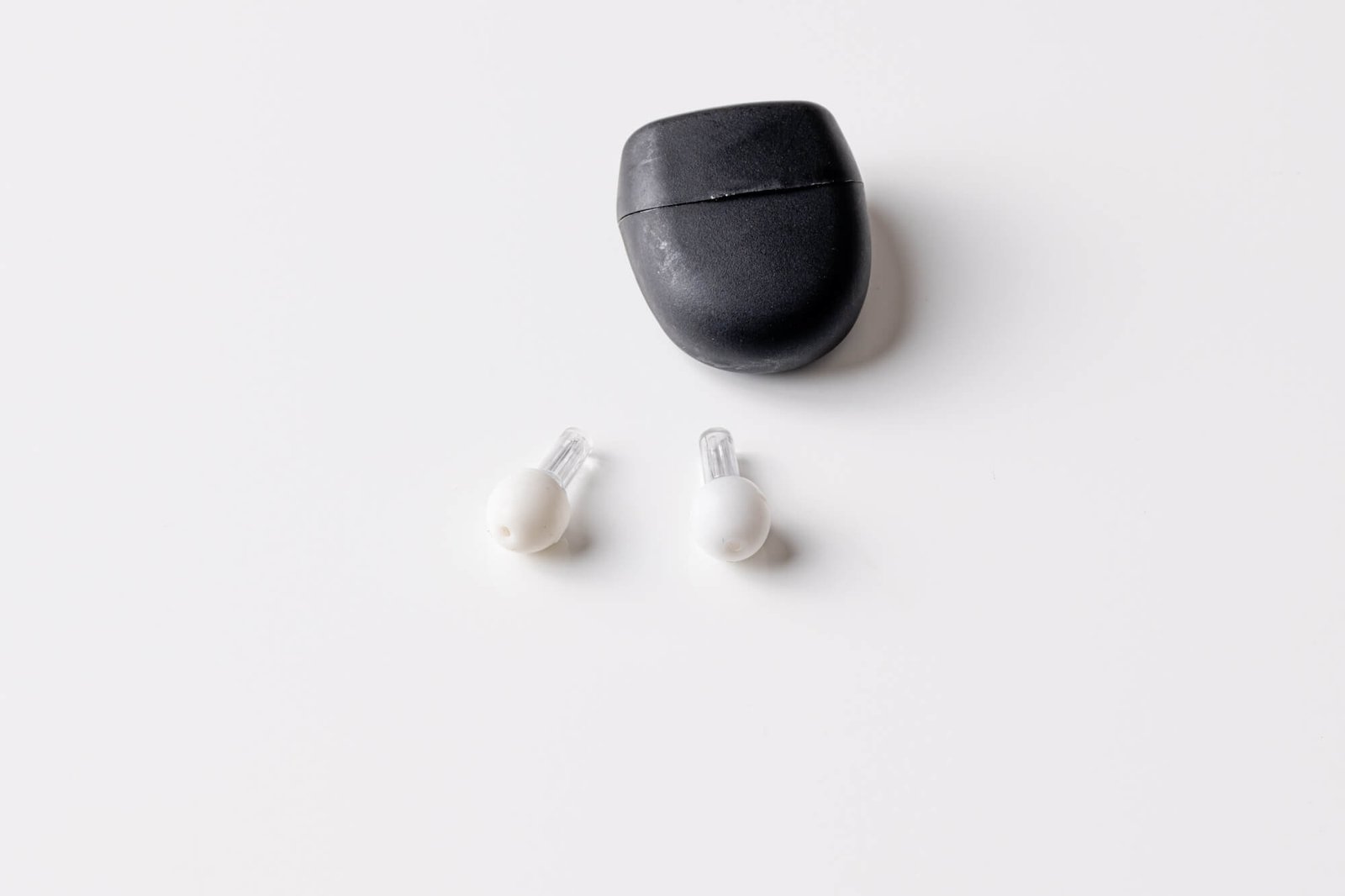
This is a tough category to rank, since every ear-plug design has a few strengths and some inherent weaknesses. Vibes – Hi-Fidelity Earplugs offer good protection with a NRR of 15, and great sound quality, but most importantly they’re easier to insert and fit more people than other designs.
Vibes have a long stem so you can insert deeper into the ear canal for a secure seal without losing them. (An attached cord would make that even easier, but most of us don’t want cords dangling out of our ears.) The rounded silicone tips also won’t poke the sides of your ear canal like pointy triple-flange tips often do.
With three sizes of tips, and the excellent control offered by the long stems, our testers felt these were the easiest ear plugs to get a reliable fit with. Foam tips always offer slightly better maximum sound blocking, but they won’t last as long and aren’t as easy to insert.
Vibes – Hi-Fidelity Earplugs
For good sound quality that won’t break the bank, our pick is the comfortable, easy-to-insert Vibes earplugs. There are less-expensive options that might work for you, but the practically-guaranteed fit of the Vibes is worth spending extra on.
The sound quality from Vibes was also good, with one of our testers rating them as average and the other tester putting them near the top. The mid-range comes through reduced but without obvious changes; the biggest difference was in the bass frequencies, where a slight drop in mid-bass made the lower bass notes stand out.
Vibes came out with the highest average tester score for ear plugs under $25, but if you’re not as picky about sound or fit, the Earpeace and Etymotics plugs are even less expensive. We think the Vibes are worth the extra $10, and so long as you’re not going to an 8-hour maximum-volume rave they offer enough protection for safe, comfortable listening.
Key takeaways:
- Vibes offer the most comfortable silicone tips that still provide a reliable seal.
- Some ear plugs sounded a bit better, but these are above average.
- A NRR of 15 is perfect for big-name concerts that don’t go crazy with volume levels.
- Inserting these plugs deep into your ear canal is required.
- This is the sweet spot between low price and amazing sound quality.
Best hearing protection: Eargasm – Slide
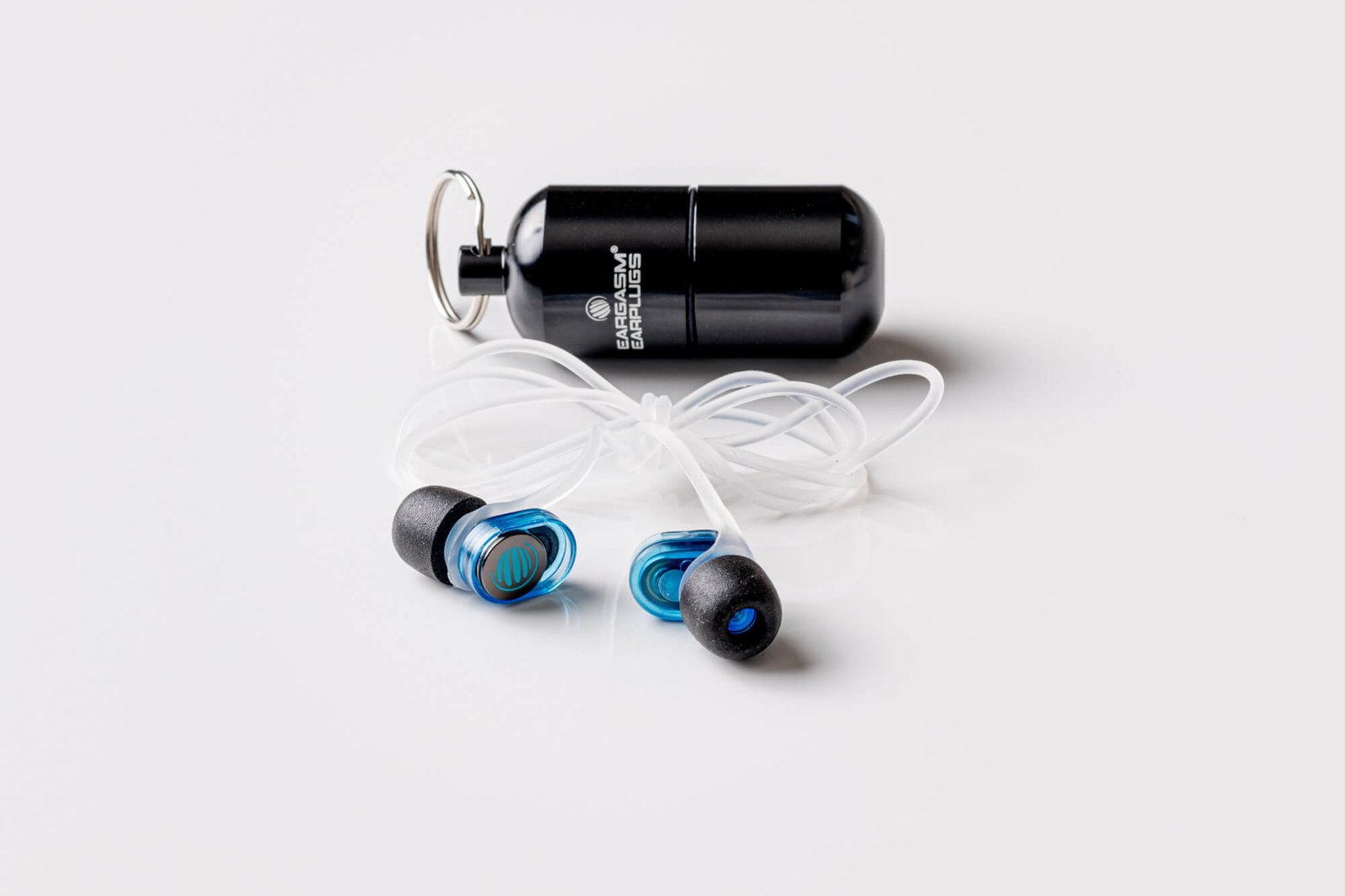
The Eargasm – Slide is the most unique design we’ve tested, offering you the chance to adjust the level of protection you’re getting without carrying around a second set of plugs.
Eargasm has been successful in the past with a triple-flange silicone design, which we tested with our previous noise-reduction-focused ear plug review, but this new concept brings a lot of extra value to the table. Now, you don’t have to remove your ear plugs after an incredibly loud song just to understand that your friend is going to get a drink — just slide the circular covers away, and your hearing ability almost doubles.
The filters set to the open position give you a noise reduction rating of 15, which is already enough protection for some shows (like outdoor festivals). When the music (or the crowd) gets even louder, you can close the slides for NRR 22, which should be enough to weather an hour of moderately loud indoor music in comfort.
If you’re one of those hardcore dancers in the mosh pit at metalcore shows, where levels often exceed 120 dB(C), you should still consider NRR 32 foam ear plugs like our top general-use ear plugs, the Moldex – PuraFit. But that’s overkill for many concerts. The Eargasm foam tips are also far easier to get a reliable seal with once you find the tip size that fits you best.
With the slides open, these plugs sounded good — not the best we tested, but better than most. Bass and mid-frequencies like vocals sounded great, while high-frequency details were the most altered.
With the slides closed we were not surprised that our favorite songs were noticeably less clear and detailed. (Even when we increased the music level to compensate.) Still, the quality was much better quality than the muffled sound you get with regular ear plugs. The biggest difference with the slides closed was when we listened for vocal harmonies; upper-mid frequencies were more difficult to pick out.
Eargasm – Slide
If you know you’re going to an especially loud concert or sporting event, these earplugs offer you the option of easily switching between a strong noise reduction rating of 15 and an even stronger 22, which means you can talk to your friends without re-inserting the ear plugs for every song. They’re more expensive than most options, but your hearing is worth it.
As far as fit goes, the tips included are regular memory-foam tips in three sizes (with an entire spare set included). The notable quirk for these plugs is that the nozzles you slide the tips over are extra-long, which means those who prefer to insert a little deeper for a better seal with smaller tips have that option.
These ear plugs also include a cord to keep them from getting separated, and what’s more, they’re magnetized so they’ll snap together and stay around your neck until you need them.
Key takeaways:
- The Eargasm – Slide is an ear plug you can wear all night at a loud concert.
- Adjustable noise reduction levels mean you get more protection exactly when you need it, without taking out and re-inserting plugs constantly.
- If you’re only going to a moderately-loud show, you might never use the closed setting.
- Other ear plugs sound a bit better for less money, if you don’t need the higher protection rating.
- Magnetic backs and an included lanyard make these easy to carry.
Best earplugs for musicians: Decibullz – Professional
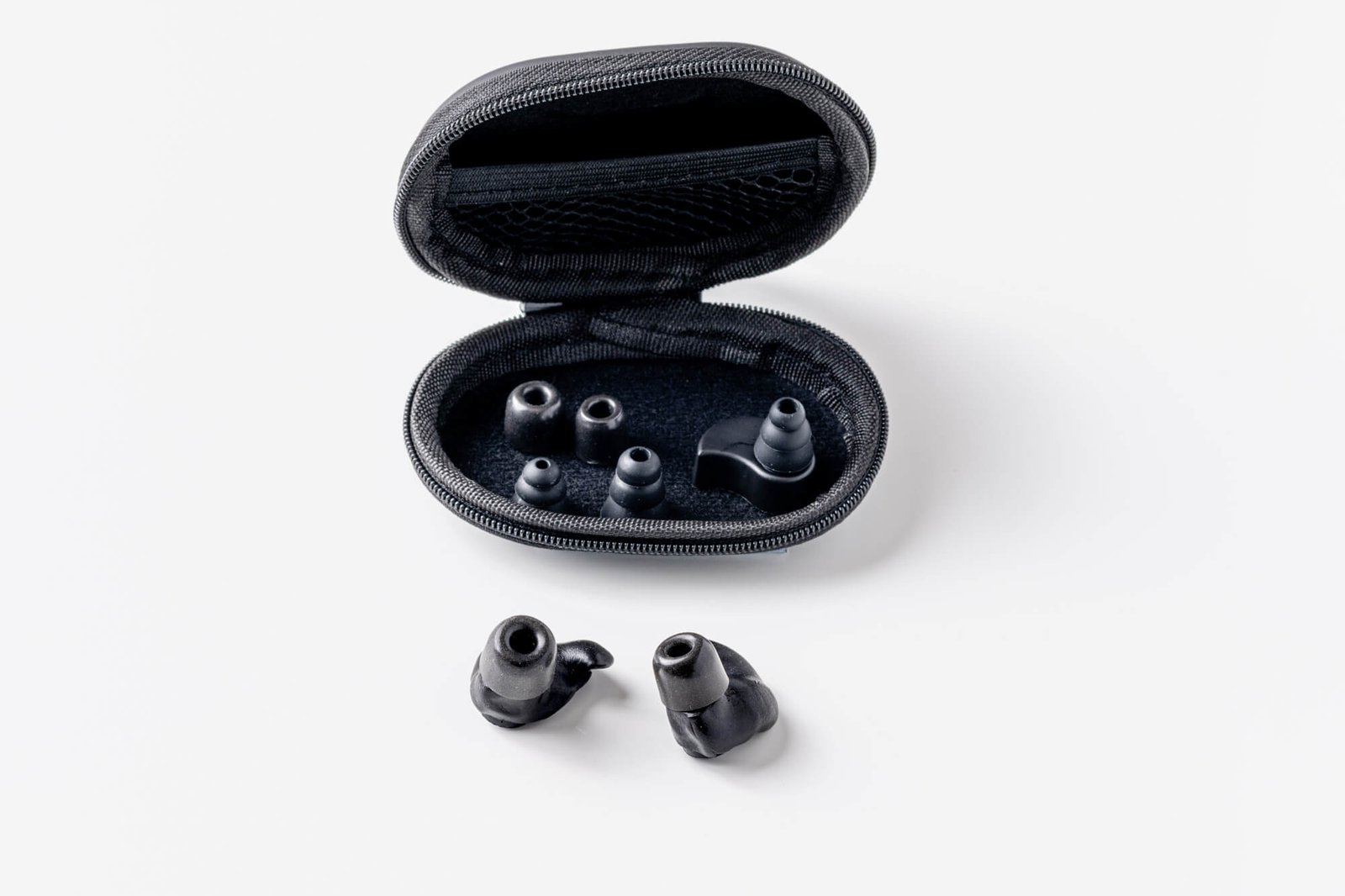
Decibullz is another newcomer to the ear plug game, and the Decibullz – Professional earplugs offer a unique approach to making a good fit. They’re more expensive than anything short of electronic or audiologist-crafted devices, but we still think they’re the best earplugs for musicians or anyone spending big bills on a premium concert experience.
Each product in the Decibullz lineup has a body made from low-temperature melting thermoplastic. The outer part of the ear plug turns into putty at about 150 °F, so you can just drop it in hot water for a few minutes, take it out and let it cool slightly, then press the ear plug into place and shape it to fill the auricle of your ear.
We were very impressed by the sound quality of these plugs. The other filters from Decibullz are competitive, but not anything special. For this professional version, the high end is clear and detailed, but there aren’t specific frequencies that get exaggerated by whatever filter Decibullz has used. If you’re willing to pay any price and put up with any inconvenience for the best possible sound, these are the winners.
Our enthusiasm is tempered by the middling noise reduction rating of 14. That’s still a huge difference compared to plugs that provide no protection, but for $100 we would have liked to see a more protective alternate option included in the box. The filter is quite easy to pop out and replace with the solid insert from their regular earplugs, but it’s a $14 accessory purchase (including spare tips) to get that flexibility.
Decibullz – Professional
Decibullz offers you a little bit more comfort with their DIY-custom-molded outer pieces, as well as a good selection of foam-tip sizes. The real win is their acoustic filters, which offer the most balanced tone along with a moderate 14 dB NRR. You’re paying four times the price for that technology, though.
Still, the only earplugs we tried that had a similar level of can’t-tell-you’re-wearing-them clarity were the barely-effective NRR 5 Earasers. Remember: Every 3 dB of reduction should double the amount of time you can stand loud music without suffering temporary reduced hearing (and risking tinnitus), but if the concert is already 24 dB over the limit then 14 is inadequate. In our experience and based on measurements we’ve seen, Decibullz are appropriate for some big stadium concerts and outdoor festivals.
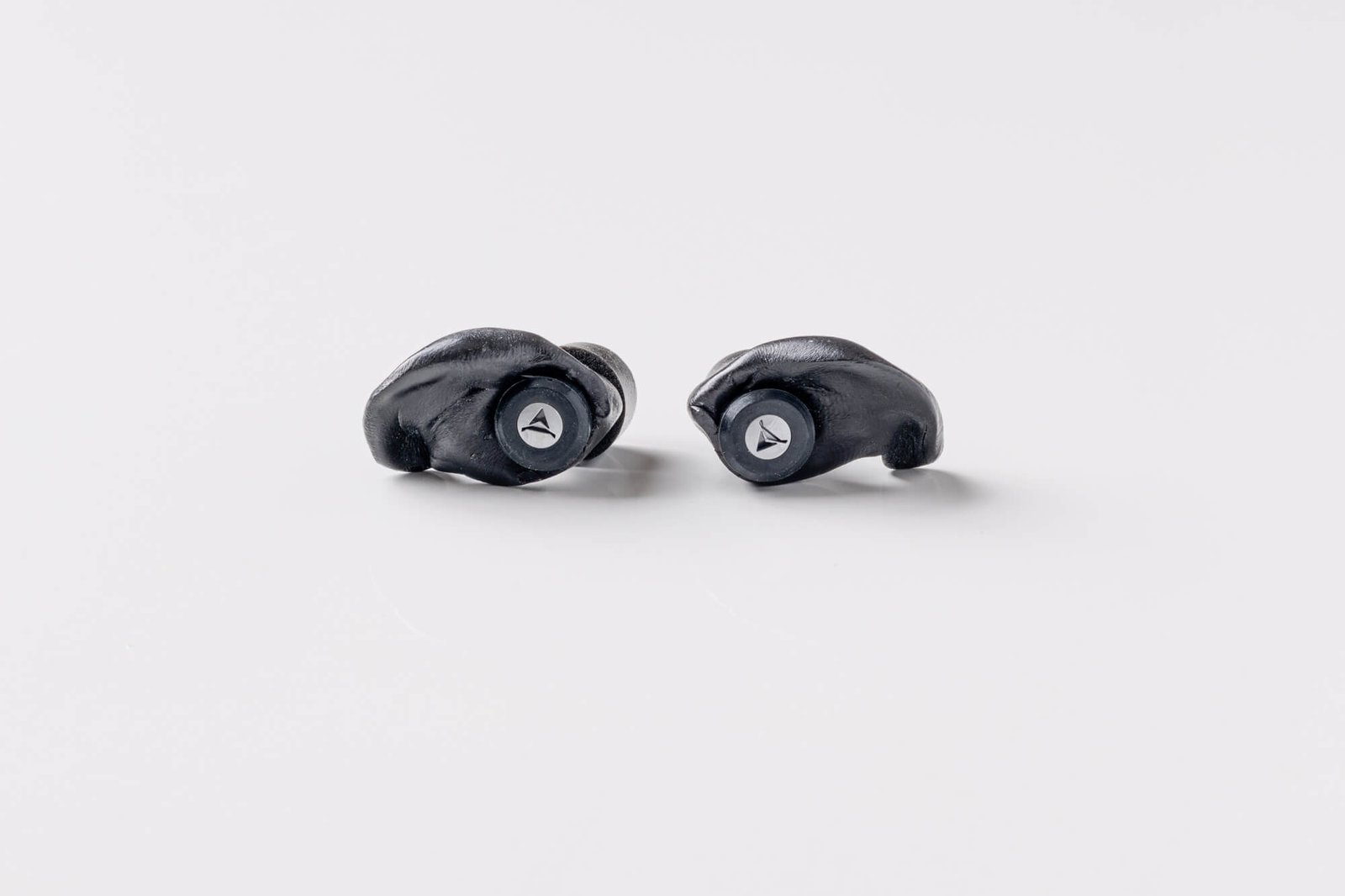
The other disappointment with Decibullz is that the custom-molded aspect of the outer ear section does absolutely nothing to improve the fit inside your ear canal, where it matters most. If you wanted, you could get a very similar “custom” effect by burying some of the other ear plug bodies in the two-part silicone offered by Radians or a low-temperature-melt plastic that’s identical to what Decibullz uses.
Usually the most difficult part of forming custom in-ear devices is getting the nozzle to stay aligned with your ear canal, but Decibullz just uses a standard silicone or foam tip to do that job. It’s no less comfortable than any of the other earplugs we tested, but it’s not significantly better except in the way it nestles securely in your outer ear.
If you’re only going to one concert per year, these earplugs are probably too expensive. But, if you’re looking to get moderate hearing protection without sacrificing sound quality, they’re impossible to beat without getting into custom-fit plugs from an audiology lab.
Key takeaways:
- Decibullz – Professional earplugs offer sound quality that’s a step above the other plugs we tried.
- The noise reduction rating of these plugs is right in the middle of the pack.
- The custom-molded outer ear portion is a nice perk, but inner ear fit still relies on standard foam or silicone tips.
- For the price, the better sound quality is hard to justify.
Other finalists we tested
Loop
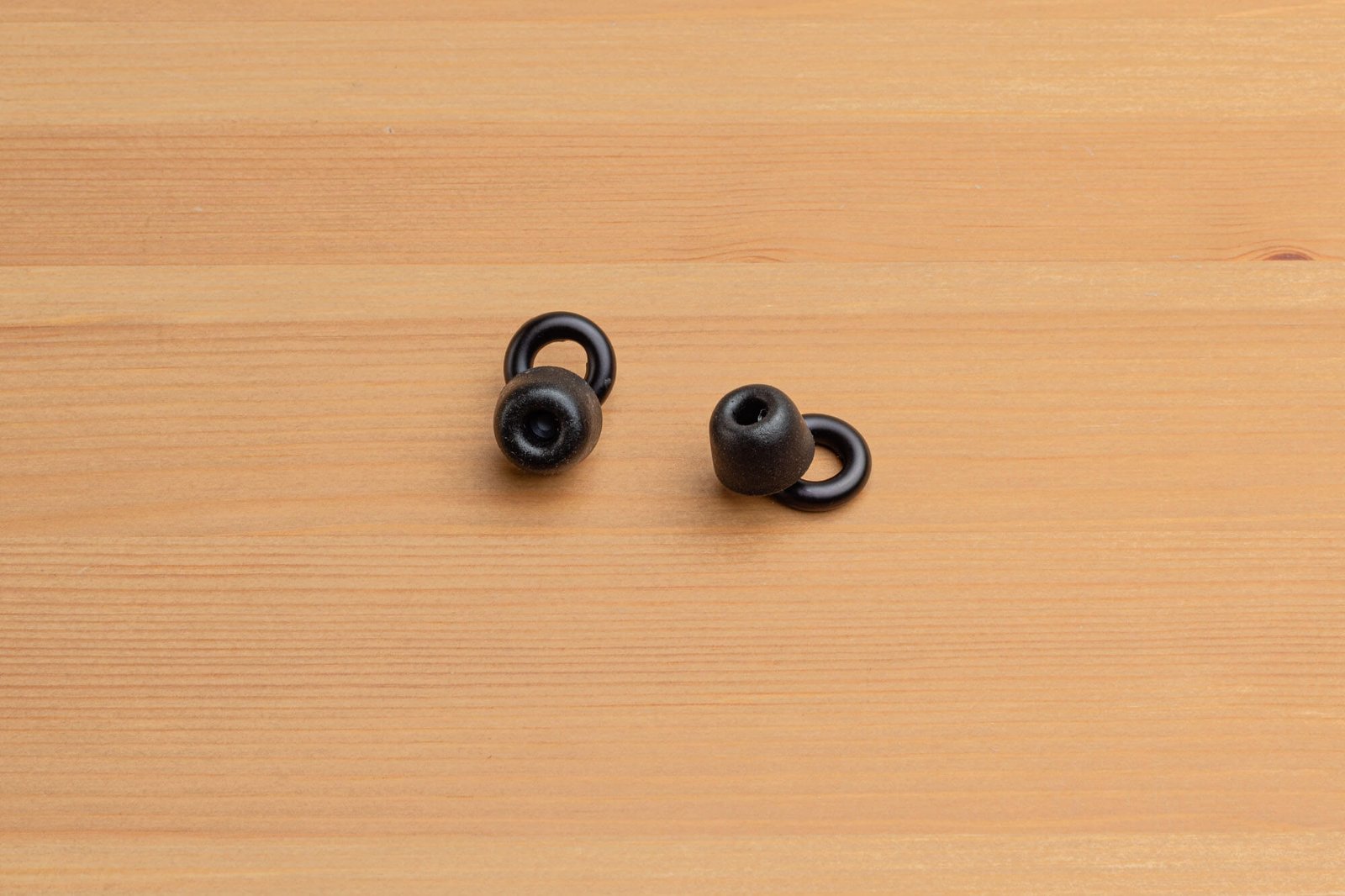
Rather than trying to make ear plugs disappear, the designers of Loop ear plugs made them jewelry. The most striking options are in silver, gold and rose-gold metallic finishes; fortunately, there’s also a basic-black option for those of us who aren’t ready for ear-plug bling.
Our testers liked the sound quality of the Loop plugs, which use the circular outer section of the plug as a tuned filter to allow more of certain frequencies in. Sound overall was impressive, with just enough higher-frequency sound getting through to preserve detail and atmospheric effects. The bass sounded a bit flabby, though, blocking the frequencies that add impact to kick drums.
The main reason these didn’t rank higher is fit: If you have narrow ear canals you may find the foam tips seal and stay in place well, but the nozzle is very short so they can’t go as deep as our testers would have preferred.
EAROS – One
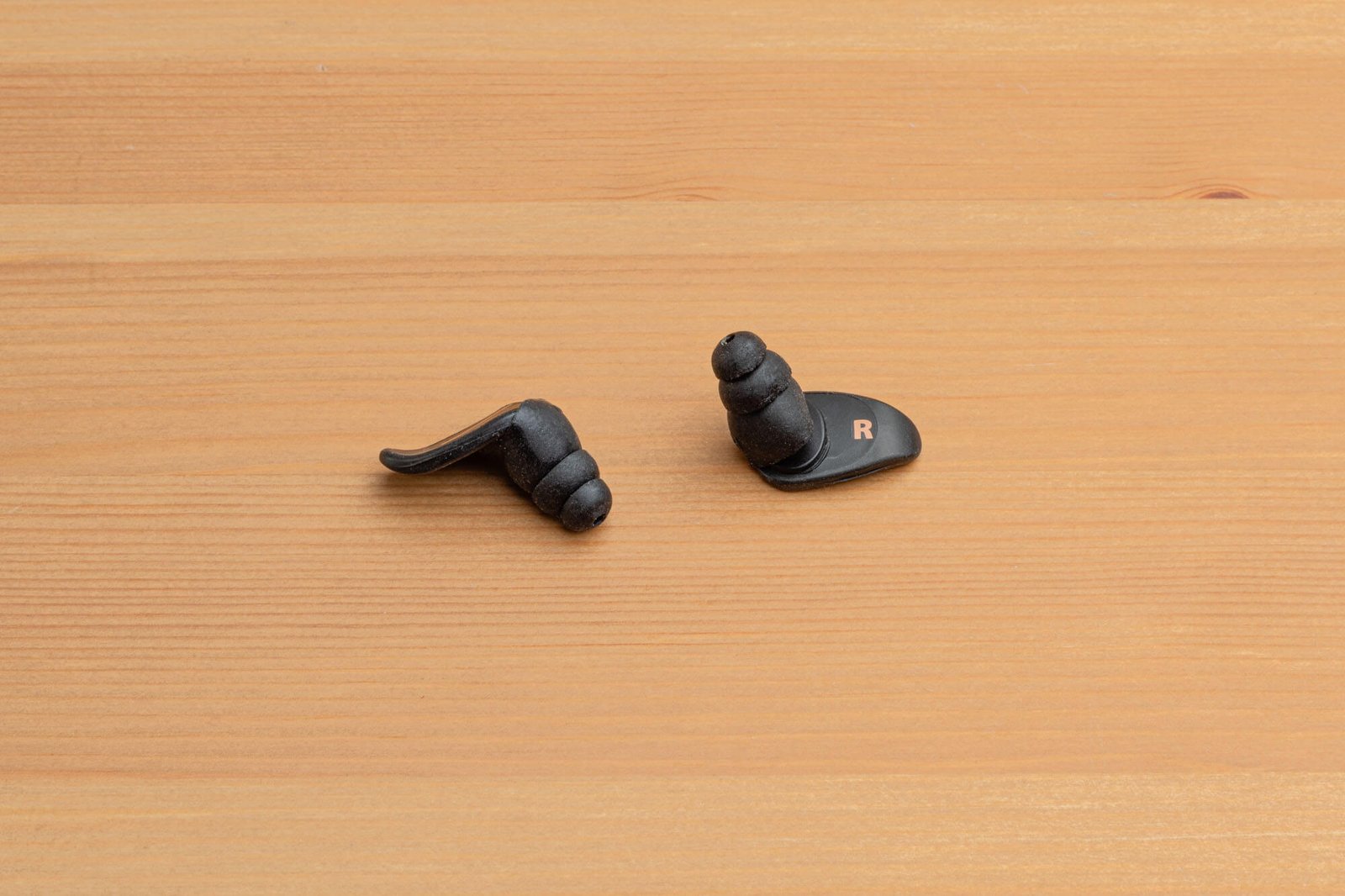
The EAROS – One features a filter body that’s flat and wide, allowing easy control of the earplug when you’re inserting it but without any fear someone could bash it into your ear canal. The tips included are the long triple-flange silicone type, a bit softer than what Etymotics uses but still not as comfortable for long sessions as a foam or rounded tip. The nozzles are a smooth 3.2 mm shaft, so you can also use the EAROS with the same tips that fit Shure, Westone and other professional in-ear monitors.
The tonal quality of the EAROS is unique, but not in a way that our testers preferred. High-frequency tones were somewhat accentuated, such that the bagpipes and cymbals in our AC/DC test track were a bit too harsh. When we listened for detail on a jazz drumming set that wasn’t a bad thing; if you were mostly using these at a loud blues bar they’d probably be perfect.
EarPeace – HD
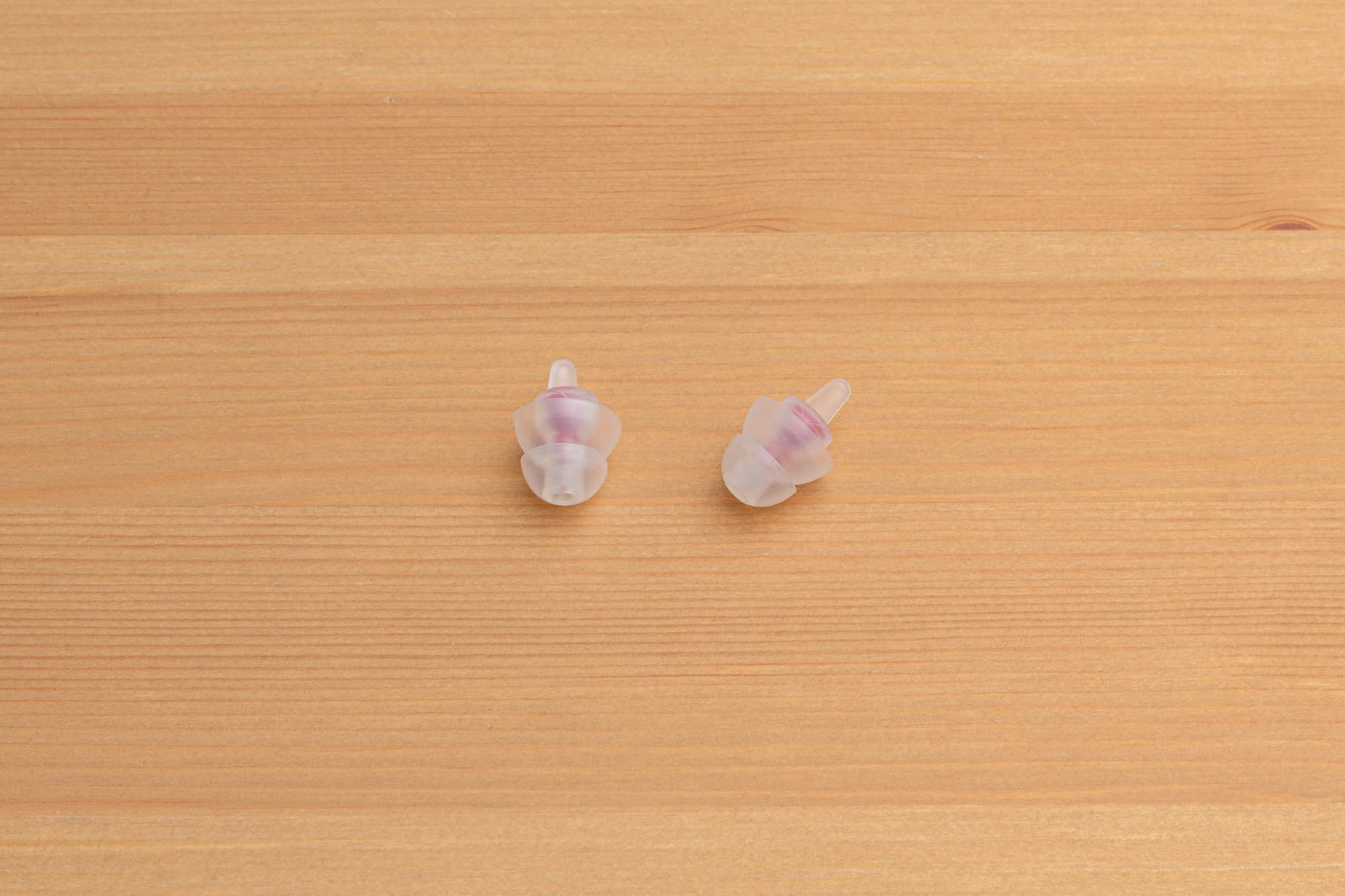
If you browse for a few minutes on the web, you’ll find a dozen or more ear plugs very similar to the EarPeace – HD set. They feature a soft, flappy silicone ear plug with a low profile to practically disappear in your ears, with an acoustical filter pressed into the center to tune what you hear. We tested a bunch of these in our general ear plug review.
We tested the EarPeace as a representative of this category because it only uses two flanges, instead of three, so it’s less likely to dig into your ear canal when inserted fully. EarPeace also includes two filters (NRR 11 and 14) and a solid plug (NRR 19) with this set, so you can customize them slightly.
EarPeace lost points, though, because the low-profile design was too difficult to remove with the tiny flap of silicone that’s provided. Even when we tried to get a shallower insertion, they were still difficult to grab. A longer “handle” stem or a cord attachment would make a big difference.
Etymotic – ER20XS
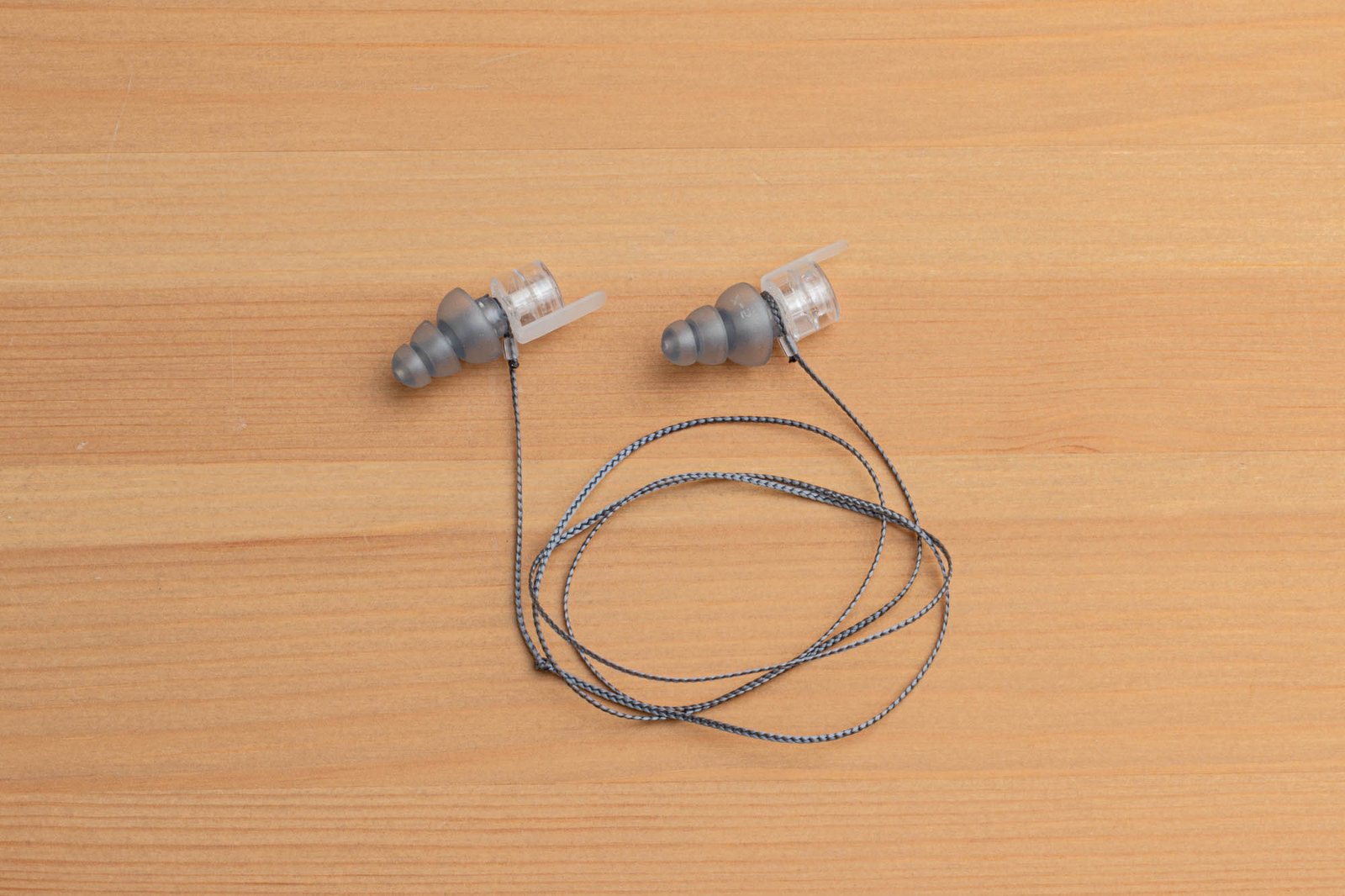
Etymotics is one of the best-known companies in this field, and the ER20XS is the newest version of a line that started with the ER15 in 1988. Etymotics has defined the category with our old pick for best musician earplugs, the ER20, and the same principles (and maybe some parts) are used by Elacin, Vibes, Vic Firth and a number of other companies.
The ER20XS provides 1 dB more protection than the older ER20, though their NRR is still only 13. The big advantage of the new model is that you can swap ear tips, where the old tips limited you to a built-in triple-flange tip. The body of the ear plug doesn’t stick out as much, either.
We didn’t like the tonal quality of music through the ER20XS as much as the old Ety plugs, and we still don’t like the way the included triple-flange tips tickle our ear canals. They’re one of the less-expensive plugs in this roundup, almost always less expensive than the brands that appear to be re-selling Etymotics technology; we think the Vibes are worth the price bump, since they’re better-sounding than these new plugs, more comfortable than the old design and have a better NRR rating.
V-Moda – Faders
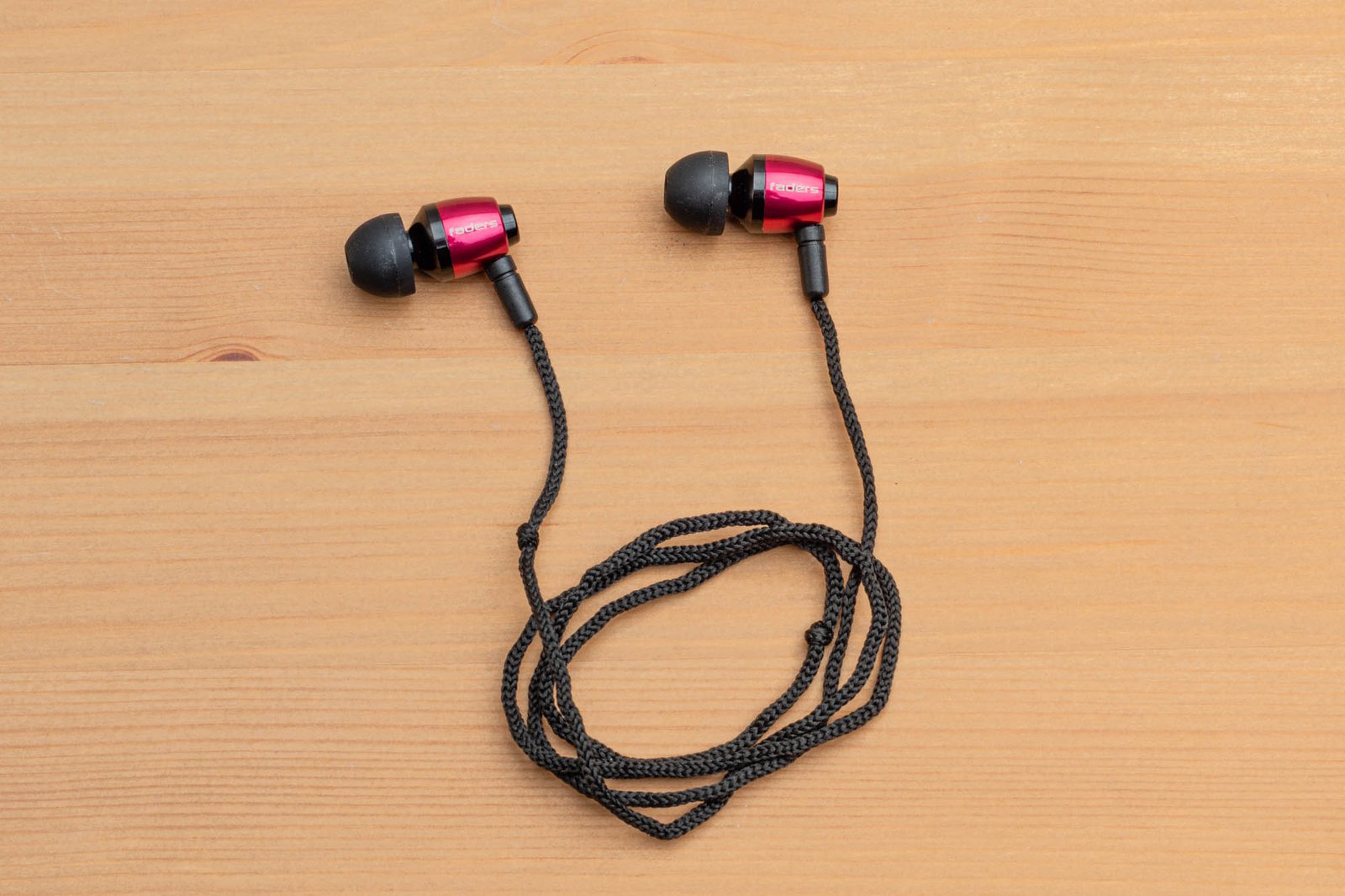
The V-Moda Faders are another unique entry in our roundup; a set of ear plugs that are basically re-engineered headphones. V-Moda has had a strong following in the world of portable audio enthusiasts, and their fashionable Vibes had a bass-heavy sound that people loved.
The Faders live up to that legacy, so if you’re OK with the low NRR of 12 and like punchy bass these might keep you happy. Bass is the least-affected frequency range when you’re wearing ear plugs, though, so that’s faint praise. One of our testers ranked them below average for sound quality, since the high frequencies just sound squashed or missing compared to the bass.
The other reason we dropped the V-Modas to the bottom of our list is the sizing of ear tips included: If your ear canals are on the smaller side, you’ll probably appreciate the selection of tiny, small, medium-small and medium, but our testers were surprised at how much they had to twist and push these to get them to seal properly.
The bottom line
If you’re going to a concert more than a few times per year, spending $30 or $50 on excellent ear plugs that will let you enjoy your music without ringing in your ears for the next few days is an obvious win. If you’re not a frequent concert attendee, just keeping a few sets of regular foam ear plugs around is probably a better choice. (The biggest risk is not being able to find them when you need them.)
We think Vibes are the best value in high definition ear plugs, with a good noise reduction rating of 15 and a simple, comfortable fit that should work for almost anyone. The sound isn’t the very best, but they sound good enough that we wouldn’t hesitate if we had to buy multiple sets for a group where up-front cost was an issue.
If you know you’re going to an especially loud concert, the Eargasm – Slide is a unique design that switches from a moderate protection level of 15 to an impressive 22 without removing them from your ears. If you’re listening to louder music for more than an hour at a time, that extra protection could easily make the difference between epic memories of amazing concerts and the regret of lost hearing and tinnitus.
If you’re a working musician, or you want to get the very best sound possible, the Decibullz – Professional ear plugs are a step up in even tone quality. They’re very comfortable, with a good selection of foam and silicone tip sizes, though the molded outer-ear portion doesn’t mean you get a perfect fit to your ear canals. Note, too, that the protection offered is fairly low compared to the Eargasm plugs, just 14.
Vibes – Hi-Fidelity Earplugs
This design hits the sweet spot: not too expensive, good sound, easy to fit in almost any ear. The protection rating is right in the middle of our favorites, and they can be customized with commonly-available in-ear-monitor tips if you need a different size.
















